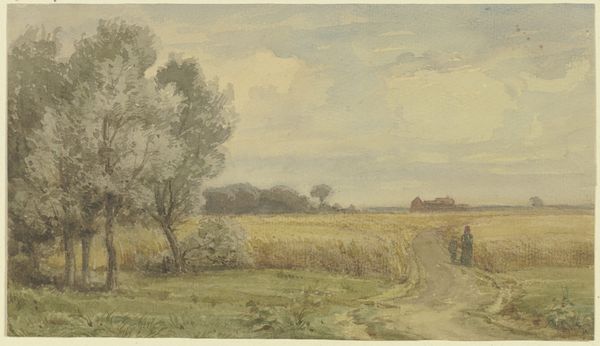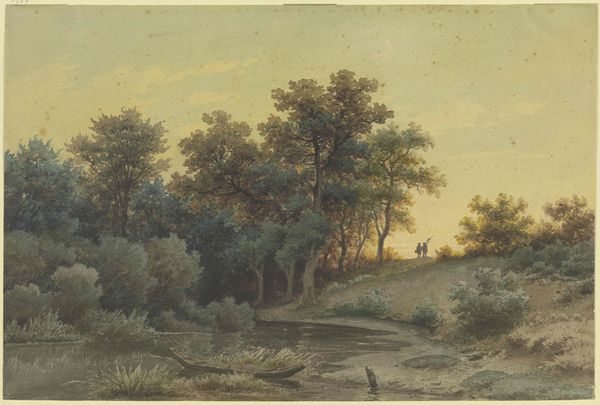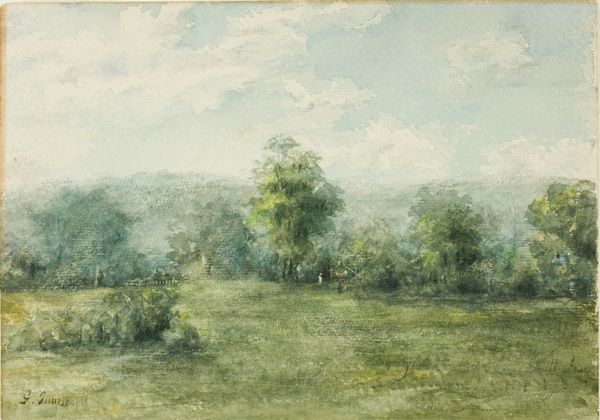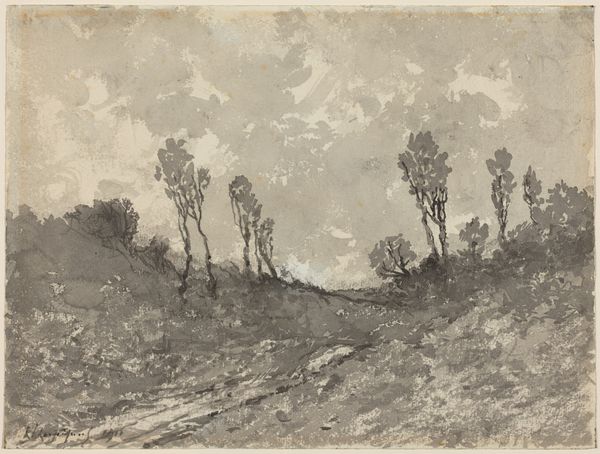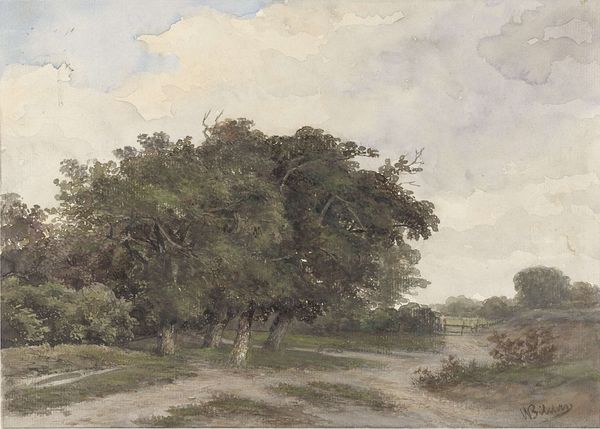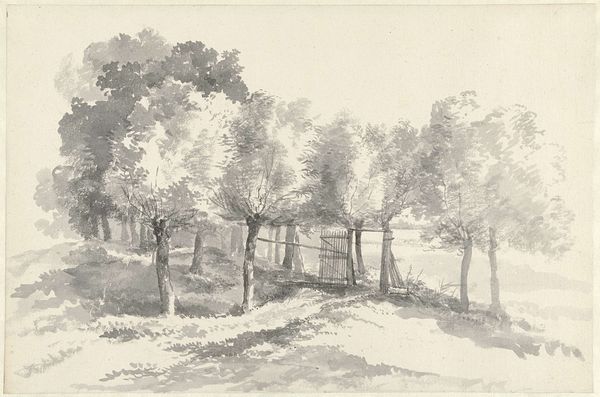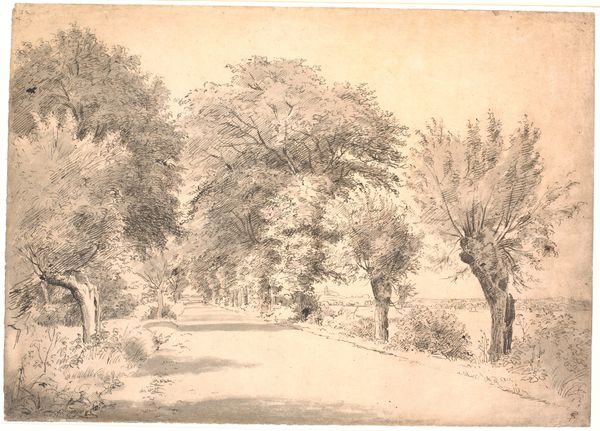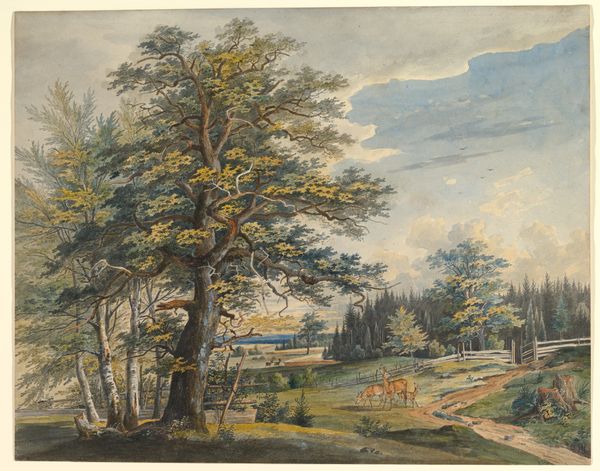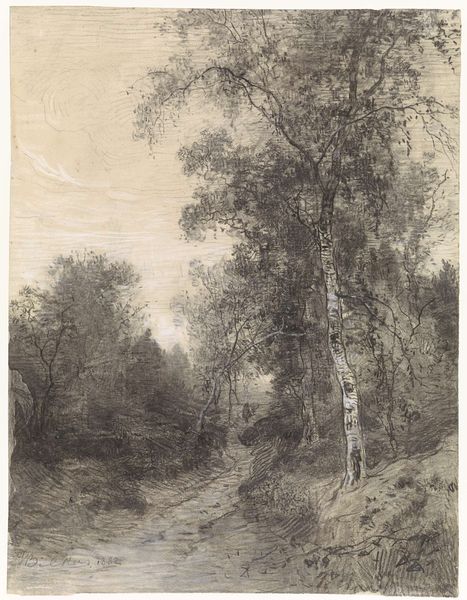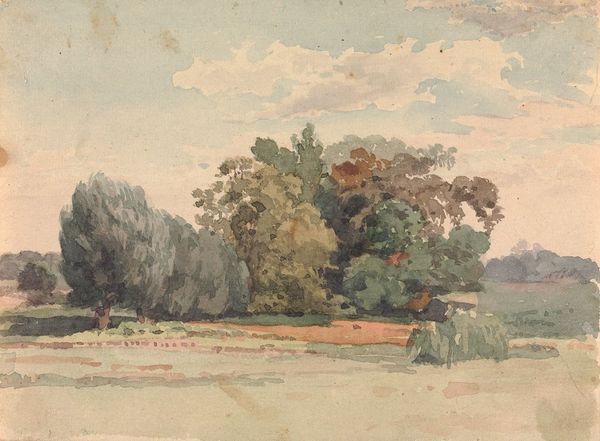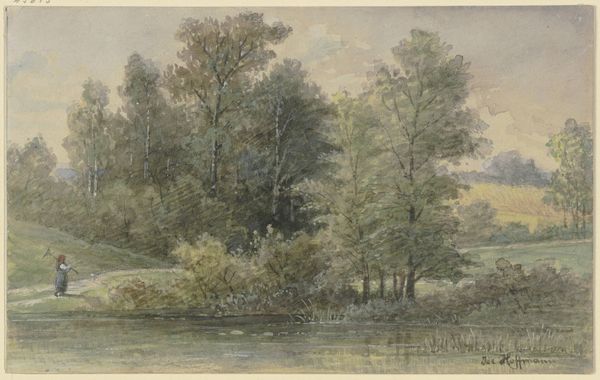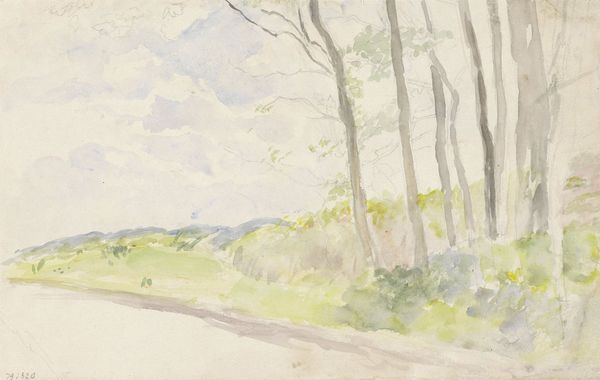
plein-air, watercolor
#
plein-air
#
landscape
#
watercolor
#
romanticism
#
naturalism
#
watercolor
#
realism
Dimensions: Overall: 5 1/16 x 7 1/8in. (12.9 x 18.1cm) frame: 16 1/4 in. (41.3 cm)
Copyright: Public Domain
Curator: This watercolor painting is simply titled "Landscape" and dates from the period between 1825 and 1865. The artist is Constant Troyon. Editor: It’s strikingly soft. The muted greens and browns give it an almost dreamlike quality. I am particularly drawn to the dirt path; its diverging tracks really invite you into the scene. Curator: Troyon, known for his involvement in the Barbizon school, helped champion the move to working en plein-air. It's intriguing how this small watercolor anticipates the larger shifts occurring in the art world toward a greater appreciation for depicting the everyday and rural existence. Editor: Yes, but look closely. Notice how the watercolor medium lends itself so beautifully to the textures of the foliage, and consider the artist’s use of layering and transparency. I'd say this exemplifies both Romantic and Naturalistic tendencies through the close attention given to the landscape’s inherent, albeit ordinary, characteristics. Curator: It’s also important to place this within the rise of landscape painting's cultural role. The expanding middle class and their growing appetite for representations of nature helped drive artists like Troyon to focus on scenes accessible and relatable to a broader audience. It mirrors an increasing public interest in rural life amid urbanization. Editor: While understanding the historical context adds depth, for me it comes back to the sheer tranquility evoked by the brushstrokes, that sense of gentle light filtering through the trees. There's something very captivating in its visual construction alone. Curator: Perhaps it’s that interplay of accessibility and artistic interpretation that makes the work so enduring. Thanks for those close readings, those perspectives always reveal fascinating entry points into art history. Editor: Indeed, thinking about its compositional balance alongside its historical context gave me an entirely refreshed sense of how to regard it, and perhaps to visit a space.
Comments
No comments
Be the first to comment and join the conversation on the ultimate creative platform.

